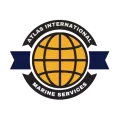Navigating the Seas of Global Commerce: Exploring the World’s Major Ports

In today’s interconnected world, the role of major ports in shaping the global economy cannot be overstated.
These bustling hubs of trade serve as gateways for goods and commodities, connecting nations and facilitating the exchange of goods on a massive scale.
Join us on a journey as we explore some of the world’s most influential ports and delve into their impact on the global economy.
Port of Shanghai, China
Situated on the mouth of the Yangtze River, the Port of Shanghai has emerged as a powerhouse in recent decades.
With its strategic location and modern infrastructure, it has become the world’s busiest container port.
The port’s influence on the global economy can be attributed to China’s rise as a manufacturing giant, with countless goods being shipped from here to destinations around the world.
Port of Singapore, Singapore
Known as the “Lion City,” Singapore has transformed itself into a global financial and trading hub.
The Port of Singapore plays a pivotal role in the country’s economy, acting as a major transshipment point for goods moving between Asia, Europe, and the Americas.
Its state-of-the-art facilities, efficient customs procedures, and strategic location have made it a preferred choice for many multinational corporations.
Port of Rotterdam, Netherland
Situated on the Rhine-Meuse-Scheldt delta, the Port of Rotterdam is Europe’s largest and one of the world’s busiest ports.
Its strategic location and extensive infrastructure make it an important gateway for goods entering and exiting the European continent.
The port’s influence on the global economy is not limited to Europe, as it serves as a vital link in global supply chains, facilitating trade between continents.
Port of Los Angeles, United States
Located on the West Coast of the United States, the Port of Los Angeles is the largest port in the country and a major gateway for trade with the Asia-Pacific region.
Its proximity to the massive consumer market of the United States has made it an essential hub for goods flowing into North America.
The port’s infrastructure, including its extensive rail and road networks, ensures the smooth movement of goods across the continent.
Port of Dubai, United Arab Emirates
Dubai’s rise as a global trade and financial center is intrinsically linked to the Port of Dubai.
Situated along the busy trade routes of the Arabian Gulf, it serves as a vital link for goods moving between Asia, Europe, and Africa.
The port’s cutting-edge facilities, such as the Jebel Ali Port, have made it a preferred choice for businesses looking to access the fast-growing markets of the Middle East and Africa.
Final Thoughts
As we conclude our exploration of the world’s major ports, it becomes evident that their influence on the global economy is undeniable.
These bustling hubs of trade serve as lifelines for nations, facilitating the exchange of goods and driving economic growth.
From Asia to Europe, the Americas to the Middle East, these ports have shaped the course of history and continue to play a crucial role in shaping our interconnected world.
As we sail into the future, let us appreciate the immense impact of these ports and their role in driving global commerce.
Found this article interesting, and useful? Please feel free to interact, recommend and share.
If you have any questions about this topic or would like to discuss your own business needs, please contact us today!
Navigating the Seas of Global Commerce: Exploring the World’s Major Ports Read More »
















